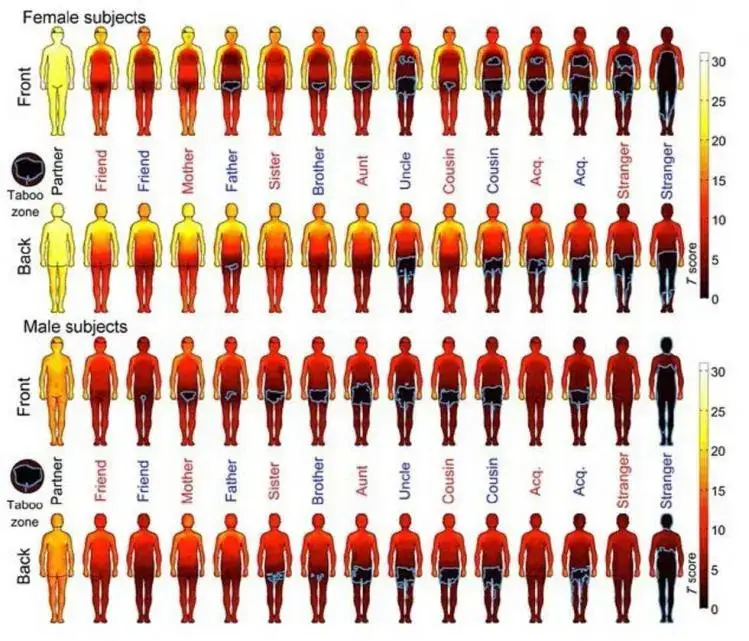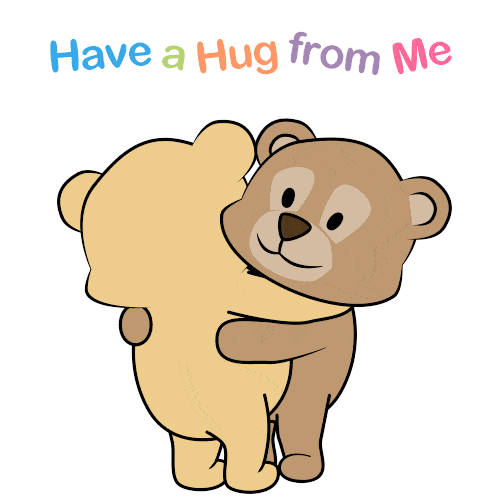Appropriate Touch and Body Language
How we use touch in communication
Touch is an important part of how we communicate with each other, but it’s not always simple. What is a friendly touch for one person may feel uncomfortable or inappropriate for another. It’s about knowing when and how to touch someone so that you get the right message across. A wrong touch at the wrong time can damage your reputation and make a situation uncomfortable.
In this blog, we’ll dive deeper into the factors that determine who we can touch, how we use touch in communication, and what types of touch there are. That way, you’ll get a better idea of how to interpret and apply touch.
Wat communiceren we door aanraking?
Appropriate Touch and Body Language
Touch is a form of communication that is highly dependent on the context. That means the same touch can mean different things depending on the situation. For example, a pat on someone’s shoulder might mean encouragement in one situation, while in another, it’s just meant to get someone’s attention.
We use touch in many different ways, for example, to:
- To offer comfort to someone (or ourselves).
- Create or strengthen a bond.
- Get someone’s attention.
- Send or guide someone.
- To greet or say goodbye.
- To ask for or give advice.
- Playfully tease.
- Show ownership or commitment (e.g. in couples).
Because touch can have so many different meanings, it’s important that we think carefully before touching someone. If we ignore the other person’s social rules or feelings, the touch can come across very differently than we intended.
What do we need to take into account?
Appropriate Touch and Body Language
If we want our touch to convey the right message, we need to understand how the other person thinks and what their feelings are when touched. Of course, we can’t always predict how someone will react, but we can try to minimize our mistakes by considering some important factors. Here are some of those factors:
Gender
A person’s gender often plays a big role in how comfortable they feel with touch. In general, women are often more comfortable with touch than men. Women usually touch each other more easily and are less likely to feel discomfort. Men, on the other hand, especially among themselves, can quickly feel uncomfortable if a touch lasts too long or feels too intimate.
When it comes to touch between men and women, touch can often be misinterpreted. Men sometimes tend to see a woman’s touch as a sexual advance, even though it may not be intended that way. This is because men are less accustomed to using touch outside of a romantic or sexual context. In men, touch is often seen as something that has to do with strength, dominance, or protection.
These differences are especially strong in Western culture. In some other cultures, touch between men and women can be interpreted very differently. This can lead to misunderstandings, especially in the workplace. Women in leadership positions sometimes face a dilemma: if they touch their male colleagues, it can be seen as flirting, when really they just want to show confidence or caring.
Culture
Cultures around the world have their own rules and customs when it comes to touch. What is normal in one culture may be inappropriate or even offensive in another. That’s why it’s important to get to know the local customs when traveling to another country.
In some parts of Asia, for example, it is highly inappropriate to touch someone’s head, even if it is a child. This is because the head is seen as a sacred part of the body. In other cultures, a big hug is a sign of hospitality and solidarity.
Status & Authority
Touch also plays a role in how we express our position in a hierarchy. In general, the person with more power or authority is the first to initiate a touch. Think, for example, of a boss who pats an employee on the back or a doctor who touches you during an examination. This is seen as normal because that person has the “leading” role in the situation.
On the other hand, it would seem strange if an employee just touched his boss, for example to give him a pat on the back. This is often seen as inappropriate or even rude. The same goes for touch between people with different status or roles, such as a doctor and a patient.
How to use touch in body language
Appropriate Touch and Body Language
Now that we’ve discussed what touch can communicate and what to look out for, let’s look at how to use touch properly in your communication.
Taking the initiative
Before you touch someone, there has to be a certain connection between you. Even something as simple as a handshake comes after eye contact and usually after something has been said, such as a greeting. The better you know someone and the stronger the bond is, the more touch is usually allowed.
Touch is often initiated by the person with the higher status. For example, if you want to comfort someone, if you are a supervisor or if you want to convey a message, you are the one who initiates the touch. This indicates that you are in control of the situation.
When you look at politicians who meet, you often see a kind of power struggle. They will try to take the dominant role by, for example, being the first to give a handshake, touch each other’s shoulder or guide each other. All of this is a way to show who is in control.
Touch as an amplifier
Touch can be used to make your message more powerful. If you have the right timing, a light touch can reinforce the words you’re saying. Imagine saying “no” to someone but giving them a gentle nudge on the shoulder in the process. That immediately makes your “no” stronger than if you were just to use the word.
The same is true in situations such as sales calls. Let’s say you’re a salesperson and you want the customer to trust you. At first, you may want to keep your distance and avoid using touch so as not to come across as too pushy. But as soon as you notice that the customer responds positively, you can use a light touch on the arm or shoulder to reinforce that positive mood.
Is someone "touchable"?
It’s not always clear when it’s okay to touch someone, especially if you don’t know them very well yet. However, there are certain signs you can look out for to tell if someone is open to touch:
- The person has an open body posture (arms not crossed).
- He or she makes eye contact and smiles.
- The person nods in agreement or leans towards you.
You can also look at how this person interacts with others. Do they use touch when talking to other people? If so, they’re more likely to be okay with it if you do too. However, if someone keeps their distance and adopts a defensive posture, it is better not to initiate touch.
Where to touch?
If you’re touching someone you don’t know very well, it’s important that the touch is neutral and short. By touching someone, you’re entering their personal space, so it’s important that this doesn’t feel uncomfortable. A light touch on the hand, shoulder, or elbow is usually safe and socially acceptable. These are parts of the body that are less intimate and that people are less likely to have problems with.
If you’re worried that the touch will be too weak or too unimpressive, it’s always better to opt for caution. An overly enthusiastic or inappropriate touch can leave a negative impression.
Where is it better not to touch it?
Some parts of the body are real “no-go” areas, especially if you don’t know someone well yet. The most central parts of the body, such as the genital area, are of course off-limits. But touching the head, especially in adults, can also be inappropriate in many cases. In some cultures, touching the head is even a big taboo.
Touching someone’s head can also be seen as condescending. It’s a gesture that’s often used to comfort children or pets, so doing that to an adult can come across as if you see them as inferior.

Conclusion
Appropriate Touch and Body Language
Touch is a powerful communication tool, but it must be used carefully. The way you touch someone can have a deeper meaning and should be in line with the situation, culture, and relationship you have with that person. Always consider the social and cultural context, and make sure you’ve established a good rapport before touching someone.
With the right timing and attention, touch can help you reinforce a message, create a connection, and improve your communication. But if not applied properly, it can evoke uncomfortable or even negative reactions. In short, touch can be a powerful tool in your body language, if you use it well!
Cultural Etiquette & Touch
Appropriate Touch and Body Language
This YouTube video depicts a situation where an African-American man enters a convenience store run by Korean immigrants. He gives a twenty-dollar bill to the cashier for his purchase and waits for his change. The cashier puts the change on the counter in front of him instead of giving it in his hand, which makes the customer angry. He interprets this as a sign of discrimination, because he is black.
However, the video explains that in many traditional Korean and other Asian cultures, it is customary not to touch strangers, especially of the opposite sex. This applies not only to Korean communities, but also to many other cultures worldwide, such as in the Islamic world where touching between men and women is often avoided. The norms for touch vary greatly from culture to culture.
For example, in the United States, it is customary to shake hands with strangers, regardless of gender. While in other countries, such as Argentina, it is customary for men and women to kiss each other on the cheek even on a first meeting.
Furthermore, other cultural differences are also discussed in the video. In the Islamic and Hindu traditions, touching with the left hand is seen as a social insult. In some Asian cultures, touching someone’s head or shoulders is inappropriate. In the United States, touching someone’s knees or thighs can be construed as a sexual advance, especially in the work environment, where it is considered sexual harassment.
Finally, the video emphasizes that every culture has its own rules and customs around touch. For example, some cultures, such as English, German, Scandinavian, Chinese and Japanese, are more reluctant to engage in physical contact, while people from Latin America and the Middle East are much more expressive and use touch more often to express emotions.
The video gives an overview of what is and isn’t appropriate in terms of touch in different cultures, highlighting that this can be a “sensitive” topic.








